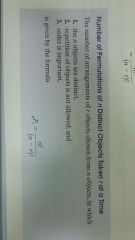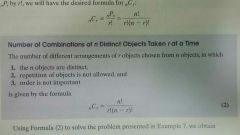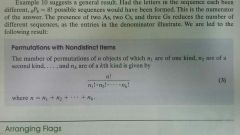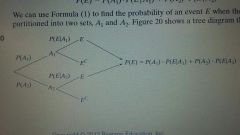![]()
![]()
![]()
Use LEFT and RIGHT arrow keys to navigate between flashcards;
Use UP and DOWN arrow keys to flip the card;
H to show hint;
A reads text to speech;
18 Cards in this Set
- Front
- Back
|
Law of Large Numbers |
As the number of repetitions of a probability experiment increases, the proportion with which a certain outcome is observed gets closer to the probability of the outcome |
|
|
Sample Space (S) |
The collection of all possible outcomes |
|
|
Event |
Any collection of outcomes from a probability experiment. |
|
|
Experiment |
Any process with uncertain results that can be repeated |
|
|
Disjoint Events/Mutually Exclusive Events |
Two events that have no outcomes in common |
|
|
Addition Rule for Disjoint Events |
P(E or F) = P(E) + P(F) |
|
|
Independent Events |
The occurrence of event E in a probability experiment does not affect the probability of event F |
|
|
Multiplication Rule for Independent Events |
P(E and F) = P(E) * P(F) |
|
|
Complement of an Event |
All outcomes in the sample space S that are not outcomes of event E |
|
|
Complement Rule |
P(E^c) = 1 - P(E) |
|
|
General Addition Rule |
P(E or F) = P(E) + P(F) - P(E and F) |
|
|
Conditional Probability |
The probability that the event F occurs, given that the event E has occurred |
|
|
Conditional Probability Rule |
P(F|E) = P(E and F) / P(E) = N(E and F) / N(E) |
|
|
General Multiplication Rule |
P(E and F) = P(E) * P(F|E) |
|
|
Number of Permutations of n Distinct Objects taken r at a Time |

|
|
|
Number of Combinations of n Distinct Objects taken r at a Time |

|
|
|
Permutations with Nondistinct Items |

|
|
|
Bayes's Rule |

|

